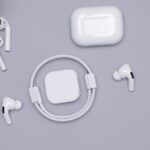
What Kind of Sand for Sandblasting
When it comes to sandblasting, selecting the right type of sand is essential to achieve optimal results. Sandblasting is a popular method used for various purposes, including surface preparation, paint removal, and rust removal. Let’s dive into the different types of sand available for sandblasting and their suitability for various applications.
Table of Contents
1. Silica Sand
Silica sand is widely used in many sandblasting applications due to its availability and affordability. It is made of small, angular particles that come in various sizes. Silica sand is suitable for general sandblasting purposes, such as cleaning metal surfaces, wood, and concrete. However, it is important to note that prolonged inhalation of silica dust can be harmful to health, so proper safety precautions must be taken.
2. Garnet Sand
Garnet sand is a popular alternative to silica sand, especially in industrial applications. It is a hard, durable abrasive material that provides excellent cutting and finishing capabilities. Garnet sand is often preferred for sandblasting tasks that require precision and fine detailing. It is widely used for removing paint, rust, and scale from surfaces.
3. Aluminum Oxide
Aluminum oxide is another commonly used abrasive material in sandblasting. It is a tough, versatile material known for its hardness and long-lasting performance. Aluminum oxide is suitable for various applications, including surface preparation, deburring, and etching. It can effectively remove tough coatings and corrosion from different surfaces.
4. Crushed Glass
Crushed glass is an eco-friendly and versatile option for sandblasting. It is made from recycled glass bottles and provides a smooth, consistent finish. Crushed glass is widely used in applications where removal of coatings, graffiti, or rust is required. Additionally, it doesn’t pose health risks like silica sand, making it a safer option.
Overall, the choice of sand for sandblasting depends on the specific requirements of your project. Factors such as the surface material, desired finish, and environmental concerns should be taken into account. It is also essential to follow all safety guidelines and protective measures when performing sandblasting operations.
So, next time you wonder, “What kind of sand for sandblasting?” consider the application, durability, and safety aspects to make an informed decision. Whether you opt for silica sand, garnet sand, aluminum oxide, or crushed glass, always prioritize safety and quality to achieve the desired results efficiently.
Remember to consult with professionals or sandblasting experts for further assistance in selecting the most suitable sand option for your specific sandblasting needs.


